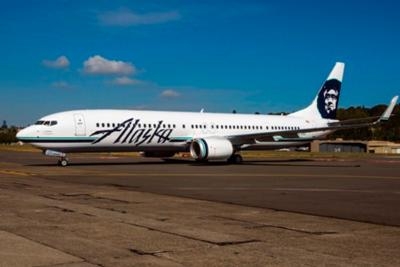Alaska's Biofuel-Powered Flights Demonstrate New, Scalable Aviation Fuel Alternative
Two Alaska Airlines jets departed the Emerald City fueled by the first alcohol-to-jet fuel (ATJ) made from sustainable U.S. corn. The two Alaska Airlines flights departed Tuesday with Gevo fuel and flew from Seattle to San Francisco International Airport and Ronald Reagan Washington National Airport.

"Alaska is committed to doing its part to reduce its carbon emissions. Advancing the use of alternative jet fuels is a key part of our emission reduction strategy," said Joseph Sprague, Alaska Airlines' senior vice president of communications and external relations. "Gevo's jet fuel product is an important step forward, in that it has the potential to be scalable and cost effective, without sacrificing performance."
While the 1,500 gallons of biofuel used on these flights have a minimal impact to Alaska Airlines' overall greenhouse gas emissions, if the airline were able to replace 20 percent of its entire fuel supply at Sea-Tac Airport, it would reduce greenhouse gas emissions by about 142,000 metric tons of CO2. This is equivalent to taking approximately 30,000 passenger vehicles off the road for one year.
Alaska estimates the 20 percent biofuel blend it is using for the two flights will reduce greenhouse gas (GHG) emissions by an estimated 50 percent. The demonstration flights mark the first biofuel produced from a new feedstock to be certified and approved by ASTM International, the industry's fuel standards association, since 2011. Additionally, today's flights are a successful step toward the production of new fuels that will help airlines to reduce their greenhouse gas emissions. Gevo's production process converts bio-based isobutanol into an alcohol-to-jet synthetic paraffinic kerosene (ATJ-SPK) fuel.
When compared to other fuel options, Gevo believes that its renewable ATJ has the potential to offer benefits to operating cost, capital cost, feedstock availability and scalability, and will translate across geographies.
"Flying a commercial flight with our ATJ made from renewable resources has been a vision of ours for many years, and it has taken many years of work to get this far," said Gevo CEO Pat Gruber. "We believe our technology has the potential to be the lowest cost, renewable carbon-based jet fuel, given the efficacy of our technology. We look forward to moving forward with Alaska, and others in the airline industry, to make renewable jet fuel widely successful as a product that substitutes for fossil fuels, and ultimately helps to reduce carbon emissions."
The renewable fuel is made from sustainable corn grown and harvested by farmers who incorporate sustainable best practices from seed to harvest, including David Kolsrud of The Funding Farm. Using advanced farming techniques to maximize corn production and minimize the use of water, fertilizers, pesticides and herbicides, Kolsrud began low carbon farming at his farm in Brandon, South Dakota in 2010.
"I grow non-edible field corn and sell it to Gevo, which separates the nutritional protein portion of the corn for animal feed and then converts the starch from the kernel to isobutanol, which is then converted to jet fuel," said Kolsrud. "This practice is a game-changer for traditional farmers like me, as this allows us to extend the use of our crop and create new jobs that frankly didn't exist six years ago."
These flights are part of the Alaska Airline's long-term stated commitment to its sustainability strategy. The Seattle-based company was the first U.S. airline to fly multiple commercial passenger flights using a biofuel from used cooking oil. The carrier flew 75 flights between Seattle and Washington, D.C. and Seattle and Portland in November 2011.
Additionally, Alaska Airlines is teaming up with the Washington State University-led Northwest Advanced Renewables Alliance (NARA) to advance the production and use of alternative jet fuel made from forest residuals, the tree limbs and branches that remain after a forest harvest. In the coming months, Alaska will fly a demonstration flight using 1,000 gallons of Gevo's ATJ being produced by the NARA team and its many partners.
Alaska has set an ambitious goal of using sustainable aviation biofuel on all flights at one or more of its primary airports by 2020. In a step toward meeting this milestone, Alaska is collaborating with Boeing and the Port of Seattle on a Biofuel Infrastructure Feasibility Study for Seattle-Tacoma International Airport.
(Source: Alaska Airlines news release. Image from file)
 Unfortunate... ANN/SportPlane Resource Guide Adds To Cautionary Advisories
Unfortunate... ANN/SportPlane Resource Guide Adds To Cautionary Advisories ANN FAQ: Turn On Post Notifications
ANN FAQ: Turn On Post Notifications ANN's Daily Aero-Term (04.29.24): Visual Approach Slope Indicator (VASI)
ANN's Daily Aero-Term (04.29.24): Visual Approach Slope Indicator (VASI) ANN's Daily Aero-Term (04.28.24): Airport Marking Aids
ANN's Daily Aero-Term (04.28.24): Airport Marking Aids ANN's Daily Aero-Linx (04.28.24)
ANN's Daily Aero-Linx (04.28.24)



